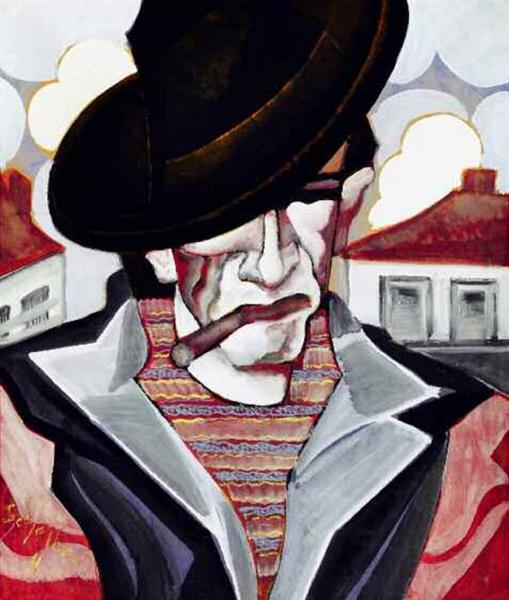Description
The "Kapaos Férfi" painting by Hugó Scheiber is a work that is registered within the tradition of modern art, characterized by its bold color use and a composition that evokes a deep connection with the human spirit through the abstract and the figurative . Scheiber, a prominent representative of the Hungarian avant -garde, is recognized for his ability to merge the vibrant color with evocative shapes, creating a visual language that invites the viewer to explore a narrative beyond the literal.
In "Férfi Kapaos", the central figure appears vigorously drawn, with a significant use of chromatic contrasts that give life to painting. The shades of blue and green are intertwined with touches of red and yellow, generating a feeling of movement and dynamism. This palette choice not only captures attention, but also suggests an emotional depth that can resonate both joy and melancholy. Scheiber's loose and expressive brushstrokes create a rich texture that seems to vibrate with each look, reflecting its technical ability as master of oil.
The male figure represented in the painting, Although stylized, it seems to evoke an essence of introspection. The arrangement of the body and gestures suggest an internal narrative, an contemplation of being. Although specific features that account for a particular identity cannot be identified, the figure transmits a universality that allows the viewer to project their own experiences and interpretations. This approach is characteristic of Scheiber's work, who was often interested in the exploration of human identity and experience through art.
The composition is asymmetric, which adds tension and dynamism to the work. The figure stands out against a background that seems to press alive, as if the space itself was imbued with an almost palpable energy. This use of space and form has been a central element in the artistic development of Scheiber, who moved away from the most rigid and academic representations towards a more personal and emotional language.
Hugó Scheiber, born in 1873, played a fundamental role in the artistic scene of Hungary, participating in movements that questioned the established conventions of the time. His style is characterized by the fusion of impressionism and postimpressionism, hugging a vibrant palette and a subjective narrative that resonates through his numerous works. "Kapaos Férfi" is a notable example of its transition to a more abstract and expressionist approach, where the presence of color and shape becomes primary vehicles of expression.
In a broader context, Scheiber's work invites a dialogue with other artists of his time, such as the master Hungarian Lajos Tihanyi or European symbolists. The exploration of the human figure in modern art, the use of color as a transgressive medium and the search for new forms of visual communication are issues that several Scheiber contemporaries also addressed, although each one from their unique perspective.
"Kapaos Férfi" is not only a work that stands out for its aesthetic beauty, but also poses questions about the role of the viewer in the art experience. The invitation to meditate on the human condition, introspection and the power of emotional expression makes this painting an essential piece to understand Scheiber's legacy and the context of modern art in Hungary.
KUADROS ©, a famous paint on your wall.
Hand-made oil painting reproductions, with the quality of professional artists and the distinctive seal of KUADROS ©.
Art reproduction service with satisfaction guarantee. If you are not completely satisfied with the replica of your painting, we refund your money 100%.

